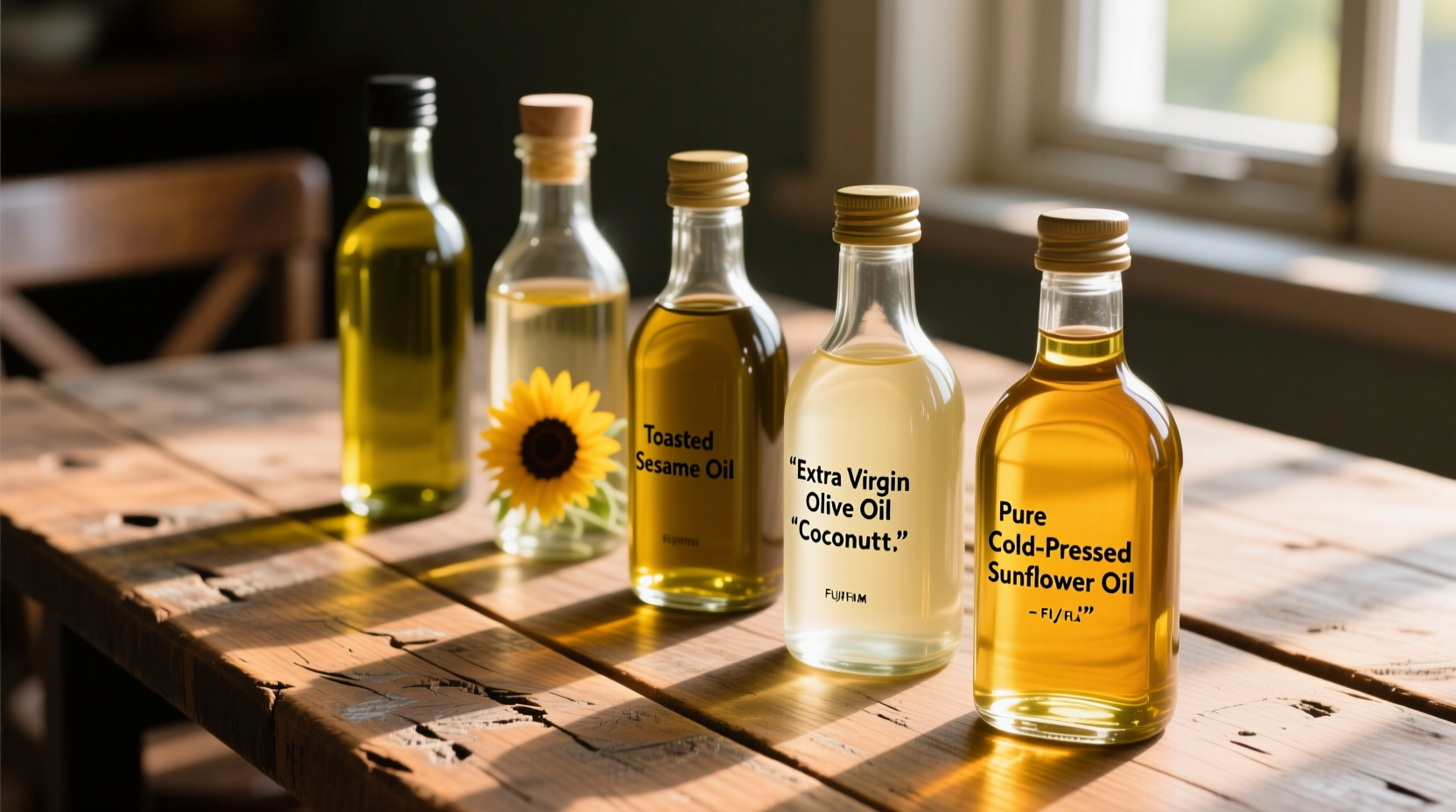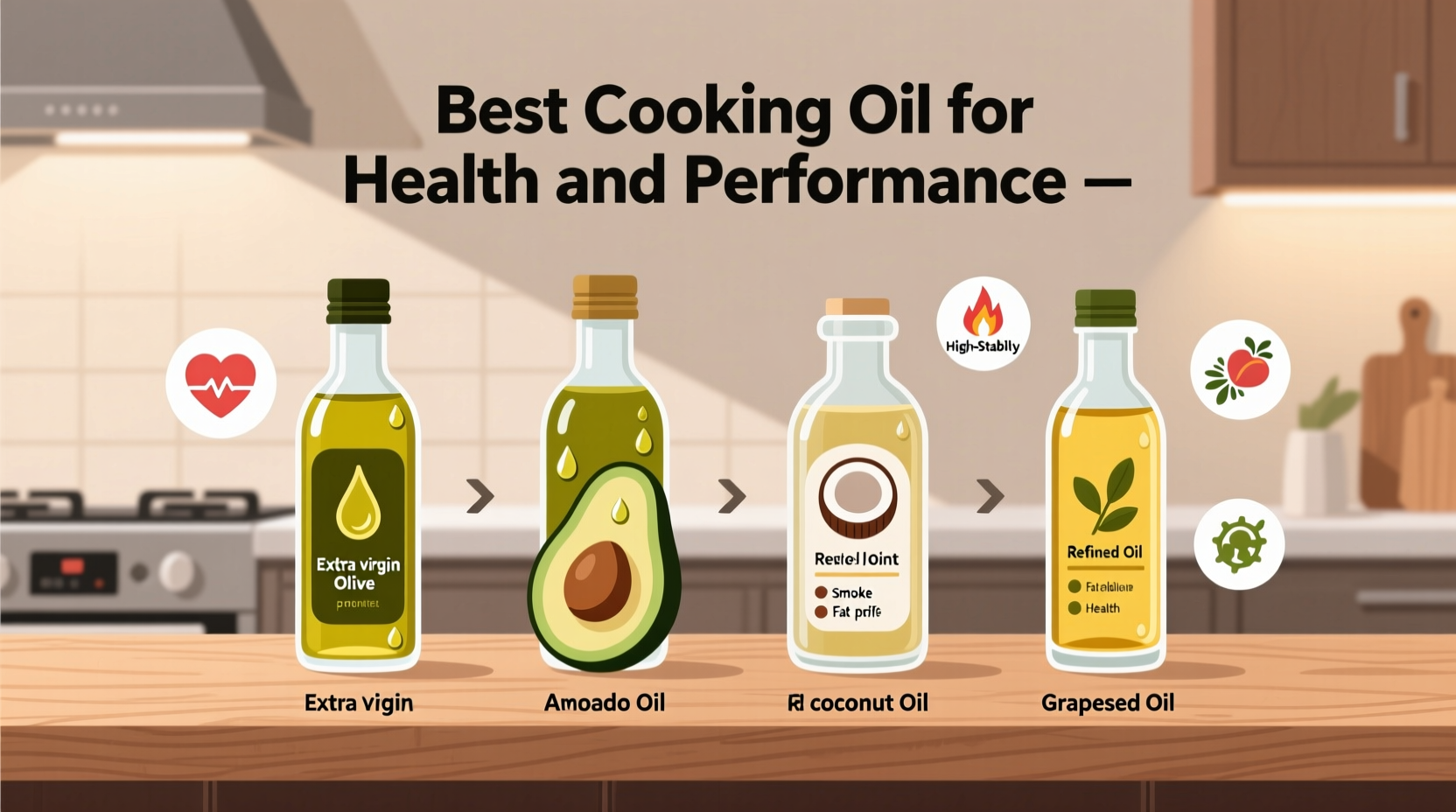Why Your Cooking Method Determines the Best Oil Choice
Many home cooks make the mistake of using one oil for everything, but this approach compromises both safety and nutrition. When oils exceed their smoke point—the temperature where they begin to break down—they release harmful compounds and acrid flavors. Understanding your cooking technique is the first step to selecting the right oil.
Decoding Oil Properties: Smoke Points and Fat Composition
Three critical factors determine an oil's suitability for different cooking methods:
- Smoke point - The temperature threshold before harmful compounds form
- Fat composition - Ratio of saturated, monounsaturated, and polyunsaturated fats
- Flavor profile - How the oil's taste complements your dish
| Cooking Oil | Smoke Point (°F) | Saturated Fat | Best Uses |
|---|---|---|---|
| Avocado Oil | 520 | 12% | Deep frying, searing, grilling |
| Refined Olive Oil | 465 | 14% | Stir-frying, roasting |
| Canola Oil | 400 | 7% | General cooking, baking |
| Extra Virgin Olive Oil | 375 | 14% | Sautéing, dressings, finishing |
| Coconut Oil | 350 | 92% | Baking, medium-heat cooking |
| Sesame Oil | 350 | 14% | Asian cooking, finishing |
| Butter | 300 | 63% | Low-heat cooking, finishing |
This comprehensive cooking oil smoke point chart, verified against USDA FoodData Central research, shows why matching oil to cooking temperature matters. The USDA's nutrient database confirms these smoke point ranges through laboratory testing of refined and unrefined varieties.
How Cooking Oil Recommendations Have Evolved
For decades, vegetable oils dominated health recommendations due to their low saturated fat content. However, recent research published in Advances in Nutrition reveals a more nuanced understanding:
- 1980s-1990s: Saturated fats vilified; vegetable oils promoted as heart-healthy
- 2000s: Recognition that not all saturated fats are equal; coconut oil gains popularity
- 2010s: Focus shifts to processing methods—cold-pressed vs. refined oils
- 2020s: Emphasis on matching oil to cooking temperature rather than blanket recommendations
A landmark 2022 review in Advances in Nutrition concluded that the stability of monounsaturated fats at high temperatures makes avocado and olive oil superior choices for most cooking applications compared to highly processed vegetable oils.
Best Oils for Specific Cooking Scenarios
Understanding context boundaries prevents common cooking mistakes. Here's how to match oils to your cooking method:
High-Heat Cooking (Above 400°F)
For deep frying, searing steaks, or grilling, choose oils with smoke points above 400°F. Avocado oil stands out as the best cooking oil for high heat applications with its neutral flavor and exceptional heat stability. Refined olive oil (not extra virgin) works well for stir-frying when you need a higher smoke point than extra virgin provides.
Medium-Heat Cooking (300-400°F)
Extra virgin olive oil shines for sautéing vegetables or making sauces. Its rich flavor enhances Mediterranean dishes while providing polyphenols with antioxidant properties. Canola oil serves as a neutral alternative when you don't want the olive flavor.
No-Heat Applications
For salad dressings or finishing dishes, extra virgin olive oil offers the most health benefits. Unheated, its delicate compounds remain intact, delivering maximum nutritional value. Walnut and flaxseed oils provide omega-3 benefits but should never be heated.

Health Considerations: Beyond the Hype
When evaluating which oil is good for heart health, consider these evidence-based findings:
- Monounsaturated fats (abundant in olive and avocado oils) consistently show cardiovascular benefits in long-term studies
- Highly processed vegetable oils may contain trans fats from hydrogenation
- Coconut oil's high saturated fat content remains controversial—use moderately
The American Heart Association's 2021 advisory emphasizes replacing saturated fats with unsaturated options but acknowledges context matters—coconut oil may be acceptable in moderation for certain cooking applications where its properties are advantageous.
Practical Buying and Storage Guide
Maximize your cooking oil investment with these professional tips:
- Read labels carefully: "Extra virgin" guarantees cold-pressed, unrefined oil; "light" refers to color/flavor, not calories
- Store properly: Keep oils in dark glass containers away from heat and light to prevent oxidation
- Buy in appropriate quantities: Purchase smaller amounts of delicate oils like walnut that spoil faster
- Check harvest dates: For premium oils like extra virgin olive oil, freshness significantly impacts quality
Professional kitchens follow a simple rule: if your oil smells rancid or tastes bitter, discard it immediately. Rancid oils contain free radicals that may contribute to inflammation.
Creating Your Personalized Oil Rotation System
Smart home cooks maintain three essential oils rather than seeking one perfect solution:
- A high-heat oil: Avocado or refined olive oil for frying and searing
- A medium-heat oil: Extra virgin olive oil for everyday cooking
- A specialty oil: Coconut for baking or sesame for Asian cuisine
This approach ensures you always have the right tool for the job while maximizing health benefits and flavor profiles. Rotate your oils based on seasonal cooking needs—lighter oils in summer, richer options in winter.
Frequently Asked Questions
Is extra virgin olive oil good for frying?
Extra virgin olive oil works for light frying up to 375°F but isn't ideal for deep frying. Its lower smoke point means it can develop bitter flavors at high temperatures. For regular frying, use refined olive oil which has a higher smoke point of 465°F while maintaining similar health benefits.
What's the healthiest oil for high-heat cooking?
Avocado oil is currently considered the healthiest option for high-heat cooking due to its high smoke point (520°F) and rich monounsaturated fat content. Unlike many vegetable oils, it doesn't degrade into harmful compounds at high temperatures and provides heart-healthy benefits according to recent research in Advances in Nutrition.
Can I substitute coconut oil for vegetable oil in baking?
Yes, coconut oil makes an excellent 1:1 substitute for vegetable oil in baking. Its high saturated fat content (92%) provides similar texture properties. Use refined coconut oil for neutral flavor or unrefined for subtle coconut notes. Remember that coconut oil solidifies below 76°F, so melt it first when mixing with cold ingredients.
How long do cooking oils last before going bad?
Most cooking oils last 6-12 months unopened. After opening, use within 2-3 months for best quality. Signs of rancidity include unpleasant odor, bitter taste, or cloudy appearance. Store oils in dark glass containers away from heat and light. Oils high in polyunsaturated fats (like walnut or flaxseed) spoil fastest and should be refrigerated.











 浙公网安备
33010002000092号
浙公网安备
33010002000092号 浙B2-20120091-4
浙B2-20120091-4